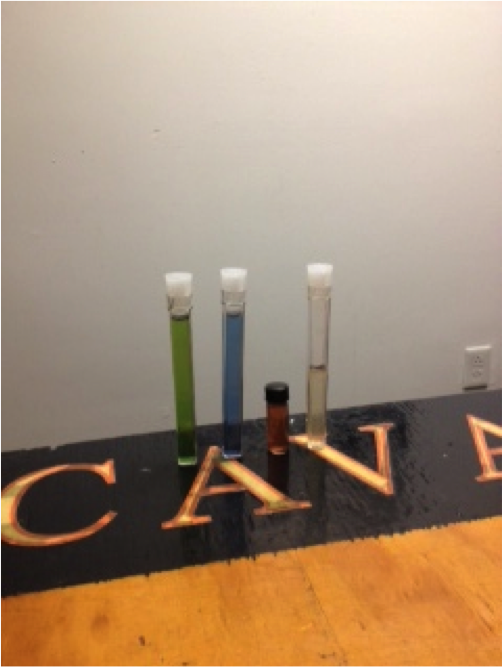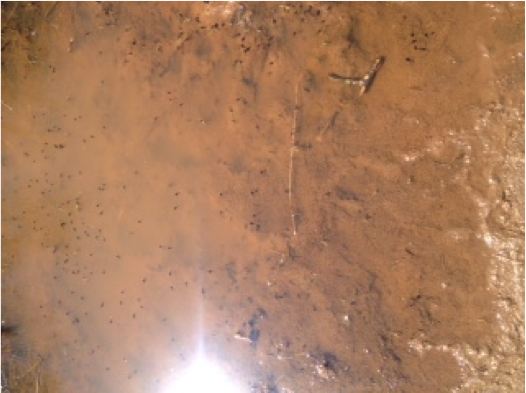Hello, my name is David McQuillen and I am a second year at the University of Virginia studying Economics. I, along with my colleague Henry Peltz, decided to explore the Rivanna River as part of our BioGrounds research. As my other team members have attested, the weather has been an issue. Luckily, I was able to make a couple of visits to Riverview Park in order to see the Rivanna.
I have always been comfortable with numbers, so I decided to take a more scientific approach to seeing how the Rivanna is able to support aquatic life. Henry provided a good background on the types of species found in and around the river, but I wanted to test the river’s health to see how it could support such a diverse ecosystem. I used a water testing kit to accomplish this. I was able to test for the river’s pH and Temperature, along with levels of Dissolved Oxygen, Nitrates, and Phosphates. This data allowed me to make an evaluation of the river’s overall health.
|
Sample |
pH |
Temperature (̊C) |
Dissolved Oxygen (ppm*) |
Nitrates (ppm) |
Phosphates (ppm) |
|
1 |
8 |
23 |
4 |
<5 |
1 |
|
2 |
8 |
21 |
4 |
5 |
1 |
*ppm=parts per million
Each measurement can give information about the river’s health.
– pH level is very important, as organisms are often suited to a certain range and can die if this fluctuates. It is good, then, that the pH was consistent in both samples. 8 is a solid pH level; the testing kit rates it as a 3 (“Good”) out of 4 (“Excellent”).
– Temperature change is the next statistic. Again, consistency is highly desirable. The temperature in the samples was a small 2 degrees Celcius; the kit rates this figure as “Excellent.”
– Dissolved oxygen is necessary for the continuation of aquatic life. Aquatic organisms need oxygen just as humans do. Therefore, a high level of Oxygen is desirable in the samples. The Rivanna did not perform too well in this test, with average ppm numbers. These, coupled with the relatively high temperature of the water, give the Rivanna a “Fair” score.
– Nitrogen, while a necessary nutrient for plant growth, is not desirable in excess in an aquatic ecosystem. In bulk, it lowers Oxygen levels. The Nitrates test was hard to read, but the two samples averaged out to just less than 5 ppm. Again, this is a average result, and the kit gives it another “Fair” grade.
– The final measurement performed sought to determine Phosphorous levels. Akin to Nitrogen, Phosphorous is a key nutrient, but is harmful in heavy concentrations. High levels of Phosphates often stem from human waste, industrial pollution, and other runoff. The Rivanna scored well on this metric, with an “Excellent” score of 1 ppm on both samples
After examining the data, it seems that the Rivanna is a healthy river. This is not surprising, as Charlottesville is not home to many large industrial firms that pollute. Though there is runoff and drainage, as Henry discovered during his visit, this water has probably already been treated and is not too detrimental to the Rivanna’s underwater world.
One interesting observation of aquatic life I had was not part of the river itself. Along the trail there was a large puddle that had formed. This puddle had obviously been there for awhile, as it was full of tadpoles! This was a good reminder that we can find nature in all places; puddles in cities, for example, are teeming with microscopic aquatic life.
In this case, our observations about the health of the Rivanna were corroborated with the testing kit. Such a healthy river is good for a city like Charlottesville. It provides safe drinking water, outstanding aesthetic benefits, and a good environment for aquatic life. If we are to incorporate bodies of water in our future designs of cities, we must ensure that they stay healthy and do not simply become a dump for industrial waste. It is good to include water in biophilic urban design within reason, and a healthy river can be a great addition to any growing city.

